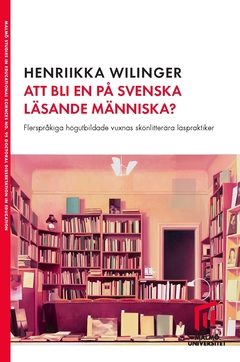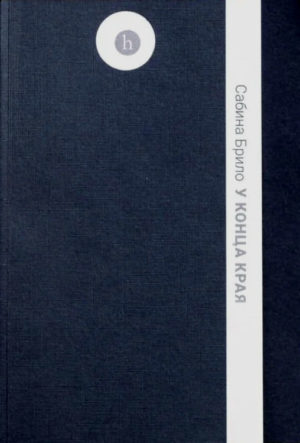This dissertation explores how and why adult migrants with academic backgrounds read literature. Two connected studies investigate second language learners' fiction reading practices in an advanced Swedish course at two universities, as well as in free time, several years after such a course. The method is qualitative, and the data consists of syllabuses, observations of an oral exam, as well as interviews with teachers, students, and multilingual individuals living in Sweden permanently. Due to the interdisciplinary nature of the thesis, the data is analyzed with a broad variety of theoretical tools, based on three cornerstones: literary education, second language learning and sociolinguistics.
The study shows that the individuals possess a great deal of resources in terms of cultural capital (Bourdieu, 1977) and literature reading. This is especially true for Eastern European students, who carry a lot of literary performance competence (Torell, 2002), including knowledge of literary canon. Overall, the multilingual academics have been socialized into fiction reading from a young age. Part I, concerning the educational context, shows that reading in Swedish, however, has been insufficient prior to the course. Therefore, the course seems to play an important role in increasing the habit of reading in Swedish, not to mention increasing linguistic self-esteem.
Reading is often legititnized by sociocultural reasons, mainly as a source of cultural knowledge (Felsk.i, 2008), but there is alsoa desire to experience the Swedish culture from the inside. The students suggest that literature can be experienced as a fonn of integration, since it makes you a part of the Swedish population that reads. However, this has more to do with social and cultural practices than being assimilated to become a "Swede". The migrants read in Swedish, or want to read in Swedish, because they already are "readers". The results indicate that the main contribution of fiction reading in advanced Swedish courses is to introduce the option of becoming a person who (also) reads in Swedish. According to me, becoming a "Swedish reader", a person that reads in Swedish that is, means being yourself, with maintained cultural capital and literary identity, even in the new cultural and linguistic context.
ln addition, language learning is considered important, when reading literature in a foreign language. The students tend to stress explicit language skills such as vocabulary learning, whereas the teachers emphasize metalinguistic skills and abstract second language use. The results imply that the multilinguals find it easier to use CALP, cognitive and academic language proficiency (Cummins, 1981) than BICS, basic interpersonal communication skills. This supports the idea that CUP, common underlaying proficiency (Cummins, 2000), as well as critical literacy (Janks, 2013), can be transferred from one language to another. Thus, most of the highly educated students use abstract and metacognitive skills in literature discussions at an advanced level. This leads to the conclusion that advanced skills in literature reading, language learning strategies, and metacognition are not a result of this course but originate from previous contexts. Moreover, interviews show that the highly educated readers do not only combine analytical and emotional reading, but often read with a focus on language matters, without disturbing the creative reading (Persson, 2007).
Part Il shows that the multilingual readers' literary practices in their free time are as dynamic and diverse as adult multilingualism itself (Cenoz, 2017). Some of the migrants have grown up with two languages, some speak three or four languages, and one speaks - and reads in -five languages. The infonnants carry cultural capital but also a literary identity that they bring into the new linguistic and cultural context They do not read in Swedish exclusively; as a matter of fact, they often alternate between different reading languages in their repertoire. Sometimes Swedish is not included among their reading languages, due to the number of other possible reading languages. In some cases, the identity positioning as a reader does not correspond with their present reading habits. Still, the cultural capital from former contexts is supplemented by knowledge and experience of Swedish literature. I claim that this could be called having a literary multilingual identity. An essential result of the study is that most of the migrants consider reading in Swedish an opportunity for wider options of social and cultural practices. These practices are not imposed by society (Pavlenko & Blackledge, 2004) but negotiable. Suggested further research topics are related to different perspectives on underused resources of multilingual adults, especially those who carry a high cultural capital. This applies to the literature education field as well as to sociolinguistics, and includes topics such as integration, identity, and language use.





